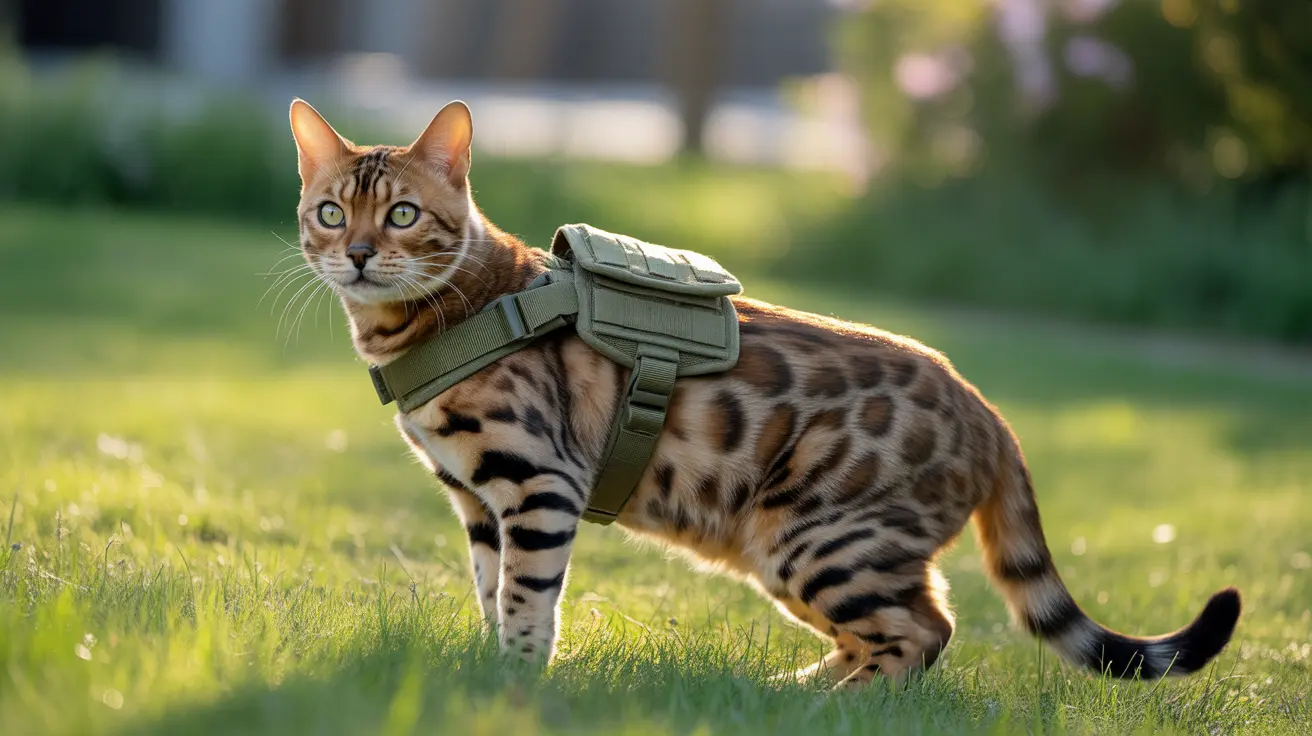For adventure-loving cat owners, tactical cat harnesses represent the pinnacle of outdoor safety and control. These military-inspired accessories offer superior security and functionality compared to traditional cat harnesses, making them increasingly popular among those who want to explore the world with their feline companions.
In this comprehensive guide, we'll explore everything you need to know about tactical cat harnesses, from their unique features to proper fitting techniques and essential safety considerations.
Understanding Tactical Cat Harnesses
Tactical cat harnesses are specially designed with durability and security in mind. Built using high-strength materials like 1000D or 1050D nylon, these harnesses offer military-grade construction that stands up to rigorous outdoor activities while keeping your cat secure and comfortable.
Key Features and Benefits
Modern tactical cat harnesses come equipped with several distinctive features:
- Escape-proof design with reinforced stitching
- MOLLE system for attaching accessories
- Padded mesh panels for comfort and breathability
- Reflective elements for visibility
- Heavy-duty buckles and adjustment points
- Reinforced handle for emergency control
Choosing the Right Tactical Harness
Selecting the appropriate tactical harness involves careful consideration of your cat's size, temperament, and intended activities. The best tactical harnesses balance security with comfort, ensuring your cat can move naturally while remaining safely contained.
Material and Construction Quality
Look for harnesses made with:
- Military-grade nylon fabric
- Reinforced stitching at stress points
- Quality hardware and buckles
- Breathable mesh panels
- Durable velcro or snap closures
Proper Fitting and Adjustment
A properly fitted tactical harness is crucial for both safety and comfort. Too loose, and your cat might escape; too tight, and it could restrict movement or cause discomfort.
Measuring Your Cat
Take accurate measurements of your cat's:
- Chest girth at the widest point
- Neck circumference
- Length from neck to tail base
- Allow for two-finger space between harness and body
Training Your Cat to Accept the Harness
Introducing a tactical harness requires patience and positive reinforcement. Most cats need time to adjust to the sensation of wearing any harness, particularly a more substantial tactical model.
Acclimation Tips
Follow these steps for successful harness training:
- Start with short indoor wearing sessions
- Use treats and praise for positive association
- Gradually increase wearing duration
- Practice indoor walking before outdoor adventures
- Monitor for signs of stress or discomfort
Maintenance and Care
Regular maintenance ensures your tactical cat harness remains safe and functional:
- Clean according to manufacturer instructions
- Check all buckles and attachment points regularly
- Inspect stitching for wear
- Store in a cool, dry place
- Replace if showing significant wear or damage
Frequently Asked Questions
What makes a tactical cat harness more secure than a standard cat harness or collar?
Tactical cat harnesses offer superior security through their military-grade materials, reinforced stitching, and multiple adjustment points. Unlike standard harnesses or collars, they're specifically designed to prevent escapes while distributing pressure evenly across your cat's body.
How do I properly measure and fit a tactical cat harness to ensure my cat's comfort and safety?
Measure your cat's chest girth, neck circumference, and body length. When fitting, ensure you can slip two fingers between the harness and your cat's body at any point. All straps should be properly adjusted and secured, with no loose or hanging pieces.
What are the main benefits and potential drawbacks of using a tactical cat harness for outdoor adventures with my cat?
Benefits include enhanced security, durability, and additional features like MOLLE attachments and reflective elements. Drawbacks may include increased weight, potential movement restriction, and a longer adjustment period for some cats.
How can I help my cat gradually adjust to wearing a tactical cat harness without causing stress or discomfort?
Begin with short indoor sessions, using treats and positive reinforcement. Let your cat wear the harness for increasingly longer periods, starting with just a few minutes. Never force the harness on your cat, and always monitor their comfort level.
What special features do tactical cat harnesses have, like MOLLE systems or reflective stitching, and how do these enhance safety or utility?
MOLLE systems allow for the attachment of accessories like treat pouches or ID badges. Reflective stitching improves visibility in low-light conditions. Additional features like reinforced handles provide emergency control, while padded mesh panels ensure comfort during extended wear.
Conclusion
A tactical cat harness represents a significant investment in your cat's outdoor safety and adventure potential. By choosing the right harness, ensuring proper fit, and following a patient training approach, you can open up a world of secure outdoor exploration for you and your feline companion.






